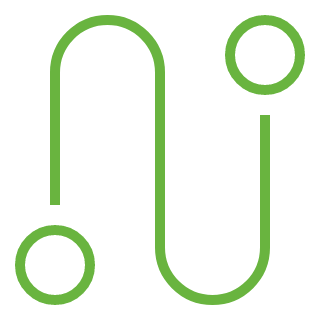Anyone who is intensively concerned with emission-free mobility also deals with the topic of hydrogen. Especially in the commercial vehicle sector, the fuel cell is a promising solution. That is why pepper is also researching and developing in this area, especially when it comes to the topic of range.

Hydrogen
Why Hydrogen?
Why are we developing a solution with fuel cells (hydrogen) and do not stick to pure battery-electric solutions?
pepper is fundamentally open to new technologies. Today, the realistically achievable range of purely battery-electric drive systems in commercial vehicles is in the range of approx. 250 – 300 km. This value depends on factors such as outside temperature and traffic situation, but also on the area in which the vehicles are used (city traffic or highway). Already today, buses in intercity traffic as well as trucks in delivery traffic with range requirements clearly above 300 km per day represent use cases for fuel cell range extenders or pure fuel cell solutions.
In addition, hydrogen as an energy carrier means that energy can be supplied to the vehicles more quickly than it is currently possible with BEV. Another advantage is that the waste heat from the fuel cell system can be used to heat the vehicle interior in winter. This significantly reduces the impact of winter outside temperatures on the range.
As a result, there is a high demand from customers to develop and offer fuel cell-based powertrains. Our plan is to have the first production-ready buses and trucks based on fuel cell technology on the road by 2024.
A question of range

Long distance
For high ranges in long-distance traffic (bus and truck), pepper is planning to offer a hybrid drive train with fuel cell. The drive system, which will continue to use pepper’s proven modular battery system, will be optimized by pepper’s developers to achieve highest efficiency, using hydrogen in the most resource-conserving way possible.

Standards
The “etrofit” approach – established by battery-electric retrofitting – makes it possible to technically modernize existing vehicles by means of a retrofit solution so that they comply with the latest automotive standards. This includes, among other things, requirements arising from the latest legislation and regulations. Vehicles modernized in this way are therefore not a compromise solution in terms of quality. The pepper team brings the necessary in-depth automotive and software know-how from previous product developments (up to series production readiness) and enables a risk-minimized, comprehensive assumption of all liability issues arising from the conversion or modernization of vehicles with H2 drives. Such modernization is achieved by integrating an independent on-board network architecture into the existing vehicle, which communicates via a secured interface developed specifically for this purpose. In this way, the latest standards and legislation affecting the powertrain can be complied with, irrespective of the vehicle base to be modernized.

Technology
The development cycles and processes consistently geared by pepper to electric drives over the past few years mean that H2 drives and vehicles can be brought to market much more quickly. Development cycles and processes oriented consistently towards electric drives over the past few years result in a much quicker market introduction of H2 drives and vehicles. This also relates to knowledge in the field of electrical energy storage. Classic development cycles in the automotive industry are complex, lengthy and make it difficult to bring the latest battery technologies (which are subject to very rapid development cycles) to market quickly. The knowledge available at pepper through experts from the scientific environment ensures a significant speed advantage.
And why does pepper not focus on hydrogen solutions then?
From a fundamental point of view, purely battery-electric solutions are technologically less complex than systems with fuel cells and therefore also less expensive. In addition, battery-electric systems can manage energy most efficiently and are therefore the most sustainable solution under ideal conditions. Furthermore, it must be acknowledged that the development of fuel cells is not yet as advanced as that of purely battery-electric systems, and that the infrastructure required for practicable operation is still in the process of being established.
Overall, however, it is the demand or use case that decides which drive technology is ideal; for commercial vehicles with ranges of less than 300 km, this currently is a purely battery-electric solution, above that, the fuel cell.
Hydrogen funding project
Within the framework of the Förderprogramm Wasserstofftankstelleninfrastruktur (Funding Project for Hydrogen Filling Station Infrastructure) of the Bavarian State Ministry for Economic Affairs, Regional Development and Energy pepper is developing a process for converting commercial vehicles to fuel cell (FC) drives. The conversion options are to be supplemented by an FC variant in three versions.
• Battery-electric drive train with a fuel cell range extender for busses (abbr. REXB)
• Pure fuel cell drive train for busses (FCB)
• Pure fuel cell drive train for trucks (FCT)
The main technical objective is to develop a robust retrofit system of FC drives compliant with ISO 26262 for used commercial vehicles. ISO 26262 is a standard for safety-related, electrical/electronic systems in motor vehicles. The second edition ISO 26262:2018 also applies to commercial vehicles above 3.5 t and describes applicable methods in development and production.
The following technical parameters are targeted as part of the funding project and are to be implemented accordingly:
- Reliable operation of the vehicles under all climatic conditions
- Achievable ranges (REXB: up to 400 km; FCB: up to 500 km; FCT: up to 800 km)
- Energy consumption of 9 to 12 kg H2 / 100 km
During the customer trial phase, the vehicles are tested in everyday use together with partners. The test and trial phase can provide important impetus for the suitability of the conversion solutions for everyday use.
CONTACT US
Send us a no-obligation inquiry – we will be happy to advise you on everything from retrofitting to charging management.
